When I wrote last week about my morbid fear of copies, and how it would infuriate Walter Benjamin, I didn’t expect to generate a debate. But lots of people made very interesting comments, which have made me think more about how and why we buy posters. But that’s for another day.
Today is a slightly more nerdy affair, as I am rather amused to report that I can address some of the more, um, detailed points about reproductions vs originals.
‘mm’ asked,
Have you ever had an LT reproduction next to an original? How different are they? Same size? Same paper? Same printer? Why indicate that it is a reproduction?…
Strangely enough, I am able to answer some of these questions, and this is our subject.
It’s a 1964 poster by William Fenton, advertising the collection of London Buses on show at the Museum of British Transport in Clapham High Street. (This was the forerunner of both the York Railway Museum and the London Transport Museum; the site is now a Sainsburys, fact fans).
To my surprise – given that it is a rather detailed picture of old bits of machinery – we seem to have two copies of this poster. One is an original,
the other the self-proclaimed reproduction.
To be honest there isn’t a whole heap of difference between them. The colour – particularly the background pink and reds – is slightly different, being a bit more orange in the reproduction.
The paper is also slightly different, but not in a way that I could definitively say was better or worse, most likely just a factor of 7 or more years elapsing between the original and the reprint.
I wouldn’t be able to make a judgement, were it not for the fact that they’ve printed THIS IS A REPRO over it in screaming capitals. In which case it’s easy, I’ll take the one on the right. And as for mm’s last question, why do that, I have no idea, absolutely no idea at all.
Paul Rennie also suggested that they might have over-printed the original posters for sale at the museum, but looking at these two, I don’t think it’s the case. These both have different serial numbers in the bottom left corner, and the reproduction has an (R) after its as well.
But what I do think they did was go back to the original printers for reprints of each poster. The Fenton poster was printed, in both cases, by the Curwen Press.
This reproduction of a 1967 Graham Clarke original (I am rather embarrassed about the numbers we seem to have) was printed by Johnson, Riddle and Co.
And a quick glance at the London Transport site tells me that the original was too.
Next week, back to why we collect posters anyway. (Short answer, because I can’t afford a Picasso; the long answer will involve French sociologists and a bit more theory. Bet you can’t wait.)
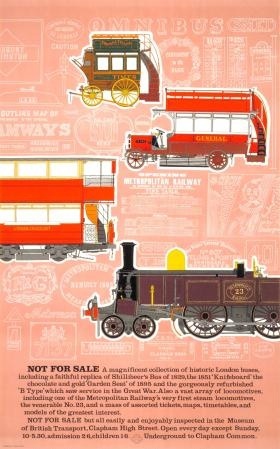
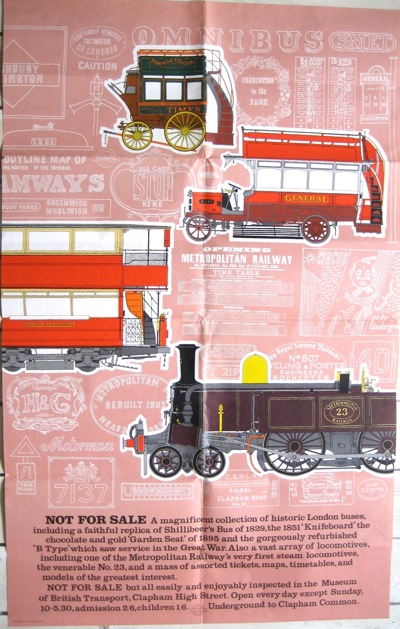
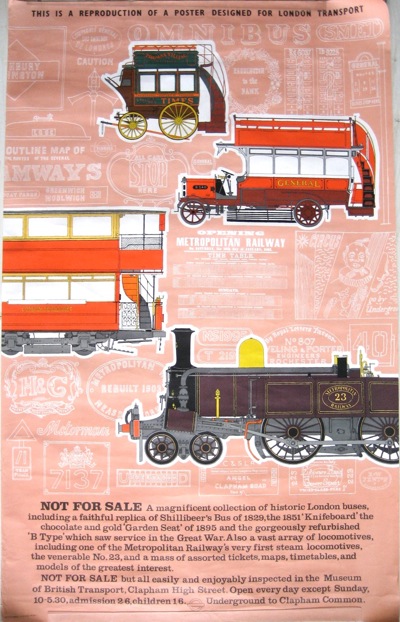
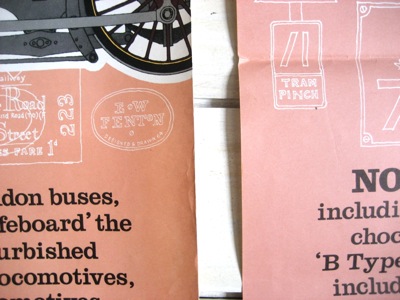
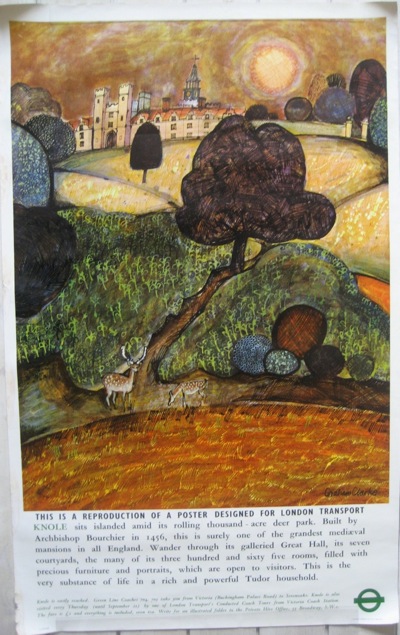
Fascinating. So where does that leave us?
If they went back to the original printers, could they have used the original printing plates? An extra print run might explain different paper and shade of ink. Is this more a first edition versus second edition situation rather than original vs reproduction? …but I guess that is just as bad as far as collectors are concerned!
This argument is rather muddied by the mentioned posters being close in date to their reproductions. There is a much greater difference in printing & paper if you compare a 1930’s poster with a LT reproduction of the same from say the 1960’s